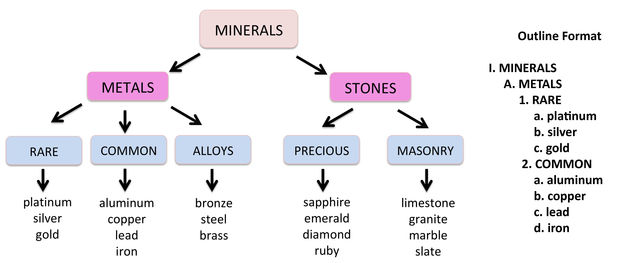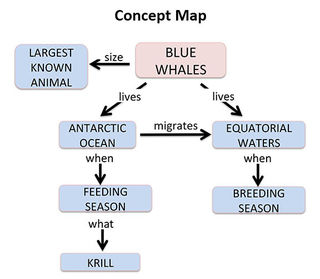Memory
Lifelong Learning and Active Brains: R Is for Relate
Making memories stick: Integrate and elaborate.
Posted August 19, 2018

Henry Molaison changed the entire field of memory research. During most of my career, until his death in 2008, we only knew him as H. M., the neurological case who underwent experimental surgery to relieve severe epileptic seizures. The surgery involved bilateral excision of the medial temporal lobe (MTL). His seizures were reduced, yet he was left with a profound amnesia—he was unable to remember events and experiences encountered since his operation. When asked about the lunch he just ate, he could not remember what he ate or even if he had eaten at all. The severity of his amnesia in someone who otherwise seemed normal made the case remarkable. Molaison could converse intelligently, hold thoughts in mind, and even recollect personal and public events that occurred prior to his operation. Yet, he could not remember anything that happened as soon as it was out of consciousness.

From studies of Molaison and other amnesic patients, we've come to appreciate the importance of the MTL in storing new memories. Neuroimaging findings have corroborated its role in establishing long-term memory for many kinds of material, including verbal information, scenes, sounds, and faces. While the prefrontal cortex (PFC) and rest of the brain work to activate information (e.g., thoughts, sensations, feelings) and give us conscious experiences, the MTL binds and stores this information (yellow links in figure). Terms such as relational binding and relational memory have been used to characterize this process, which operates continually to provide a stored record of our daily experiences.
Although the MTL is critical for storing daily events, conceptual knowledge and long-term personal memories must ultimately be stored outside of the MTL, otherwise amnesic patients wouldn't be able to access their knowledge, converse normally, or reminisce about the past. Memory theorists argue that our vast storehouse of long-term memories is distributed widely in broad regions of the cerebral cortex as a network of connected information. Recent daily events stored in the MTL must be integrated, related, and established in cortical regions as permanent long-term memories—a process called memory consolidation. By this view, conceptual learning requires 1) PFC activation of pertinent information in working memory, 2) MTL binding of that information, and 3) memory consolidation—integrating and relating new information into knowledge networks stored in the cerebral cortex.
This biological framework reinforces the third principle of MARGE—the need to relate new information to what we already know. Throughout the learning process it is critical to establish meaningful chunks of new information and relate them to existing knowledge. Yet sometimes we need to learn seemingly arbitrary associations that have no inherent meaningfulness, such as remembering a group of terms or names of places. In such cases, it is often useful to create your own verbal or visual mnemonic. Acronyms, such as MARGE or HOMES, serve as useful verbal mediators to remember sets of terms or names (HOMES can be used to remember the five Great Lakes—Huron, Ontario, Michigan, Erie, Superior). Visual imagery can help link names—for example to remember that Lincoln is the capital of Nebraska, you could create an image of Abraham Lincoln sitting in the capital building of Nebraska. It is best to generate interactive images when creating visual mediators.
Verbal and visual mediators are effective but have limited usefulness as they are meant for arbitrary associations that don't have intrinsic meaning. More important is the need to develop techniques that integrate meaningful facts and concepts into existing knowledge frameworks. The most effective way to do this is to consider the 3 C's—categorize, compare, and contrast (mentioned previously). One technique that draws on the 3 C's is the elaborative-interrogation mnemonic, in which new learning is accompanied by asking "why" or "how" questions and generating reasonable answers. For example, here are some facts about blue whales abstracted from Wikipedia:
Blue whales, the largest animal known to have ever existed, gorge on krill (small shrimp-like creatures) in the rich waters of the Antarctic Ocean before migrating to their breeding grounds in the warmer, less-rich waters nearer the equator.
To elaborate on this information consider such questions as, Why do blue whales spend time in the Antarctic Ocean? Why do they migrate to warmer waters near the equator? The simple act of generating questions and providing answers helps to integrate new facts into your knowledge database. The elaborative-interrogation mnemonic forces you to categorize, compare, and contrast. Another way to integrate facts is to develop a mental image or better yet a mental movie, such as imagining a huge blue whale feeding on krill amongst glaciers then swimming toward the equator to breed. The key to these learning techniques is that new facts are organized as a meaningful cluster of information that can be integrated into what you already know.
A useful way to introduce a new concept is to consider metaphors and analogies that connect new schemas to familiar ones. For example, by relating conceptual knowledge to the web-based Wikipedia application, one gains a sense of how human memory can be viewed as an organized network of associated facts and how new information can be added by creating new links to existing knowledge. Metaphors and analogies work because a new conceptual framework is described with respect to the relationships found in a familiar concept. Another example is the use of a camera to describe the optics of the human eye. There are useful analogies to their parts, such as the cornea as lens, pupil as aperture, and retina as light sensor. There are of course differences between an eye and camera, just as there will be differences between any two concepts. As such, when applying metaphors and analogies as educational tools, it is useful to describe both commonalities and inconsistencies between a new concept and the metaphor/analogy used.
When viewed as a network of linked information, we can appreciate how important it is for our conceptual knowledge to be well organized. New information must be appropriately related to existing knowledge for it to be well integrated and easily retrieved in the future. In a classic memory study (Bower et al 1969), individuals were given two ways to learn a list of 18 minerals. One group was simply shown the words in a random display and asked to remember them. Another group was shown the words organized as a conceptual hierarchy in which they were grouped into meaningful subcategories, such as MINERALS—>METALS—>RARE would refer to platinum, silver, and gold and MINERALS—>STONES—>PRECIOUS would refer to sapphire, emerald, diamond, and ruby.

When shown the hierarchical organization, individuals recalled 65% of the words compared to recalling only 18% of the words in the random condition. The power of hierarchical organizations is that they provide a framework that allows one to access any specific item via a few associative links. In this case, every mineral is only three links from the main topic. For example, bronze is accessed via MINERALS—>METALS—>ALLOYS—>bronze.
We are familiar with the standard method of formatting hierarchical outlines, with Roman numerals indicating the main topic, then capital letters, numbers, and lower case letters referring to subsequent sublevel categories. The stimulus set of minerals can be schematically organized in outline format as shown above in the figure. The construction of outlines should be encouraged whenever we are learning conceptual knowledge. A similar approach is the construction of concept maps, which are visual schematic representations of concepts using nodes and arrows to refer to propositions. Below is a concept map of the facts about blue whales presented earlier. Nodes (terms) are linked by arrows that define relationships between nodes.

For example, the fact that blue whales live in the Antarctic Ocean is represented by the node, BLUE WHALES, linked to ANTARCTIC OCEAN with an arrow labeled "lives." When constructing outlines or concept maps it is important to limit the numbers of links (subcategory items, arrows) from any one item to another by not more than five (three or four links per item is optimal).
When we apply relational memory techniques, such as forming verbal/visual mediators, applying the 3 C's, using metaphors/analogies, and constructing schematic organizations (outlines, concept maps), we are facilitating memory consolidation and long-term retention. These methods engage the learner by actively integrating new information in terms of meaningful links and relationships to existing knowledge. Thus, relate it to make it stick! To be continued…

References
Corkin, S. (2013). Permanent Present Tense: The Unforgettable Life of the Amnesic Patient, H. M. Basic Books: New York.
Dunlosky J., Rawson, K. A., Marsh, E. J., Nathan, M. J., Willingham, D. T. (2013). Improving students’ learning with effective learning techniques: Promising directions from cognitive and educational psychology. Psychological Science in the Public Interest, 14, 4–58.
Novak, J. D. & A. J. Cañas, (2008). The theory underlying concept maps and how to construct and use them, Technical Report IHMC CmapTools. Institute for Human and Machine Cognition.
Reagh, Z. M., & Ranganath, C. (2018). What does the functional organization of cortico-hippocampal networks tell us about the functional organization of memory? Neuroscience Letters, 680, 69-76.
Shimamura, A. P. (2010). Hierarchical relational binding in the medial temporal lobe: The strong get stronger. Hippocampus, 20, 1206-1216.




